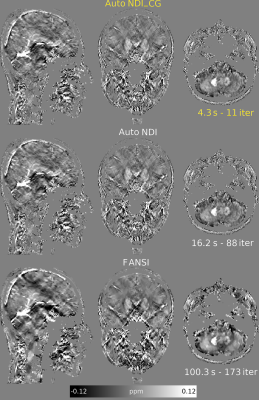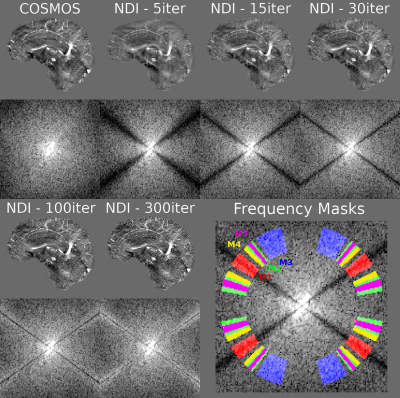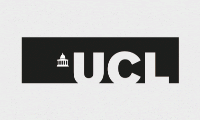Carlos Milovic1 and Karin Shmueli1
1Department of Medical Physics and Biomedical Engineering, University College London, London, United Kingdom
1Department of Medical Physics and Biomedical Engineering, University College London, London, United Kingdom
Non-regularized
Quantitative Susceptibility Mapping by stopping a nonlinear conjugate
gradient solver early (by analysing the susceptibility frequency
domain) gives robust parameter-free reconstructions in vivo, faster
than state-of-the-art methods.

Figure
5: Comparison of Auto NDI_CG and Automatically stopped NDI with FANSI
in
vivo.
High quality NDI reconstructions are possible even with extremely
noisy voxels. Auto NDI_CG and Auto NDI produce very similar
susceptibility maps (with substancial control of streaking artifacts
and sharp fine details) but NDI_CG is much faster and showed no signs
of susceptibility underestimation.

Figure
1:
Spatial
frequency components of the RC1 ground truth and NDI_CG
reconstructions for different numbers of iterations. With more
iterations, frequencies close to the magic angle are amplified. To
assess QSM optimality (RMSE: 18 iterations), the mean absolute values
of the frequency coefficients in regions M1-M3 have been used
previously8.
Here, regions M4 and M5 near the cone were used. All regions were
defined as a function of the dipole kernel coefficients and radial
frequencies 0.60-0.95 mm-1.
